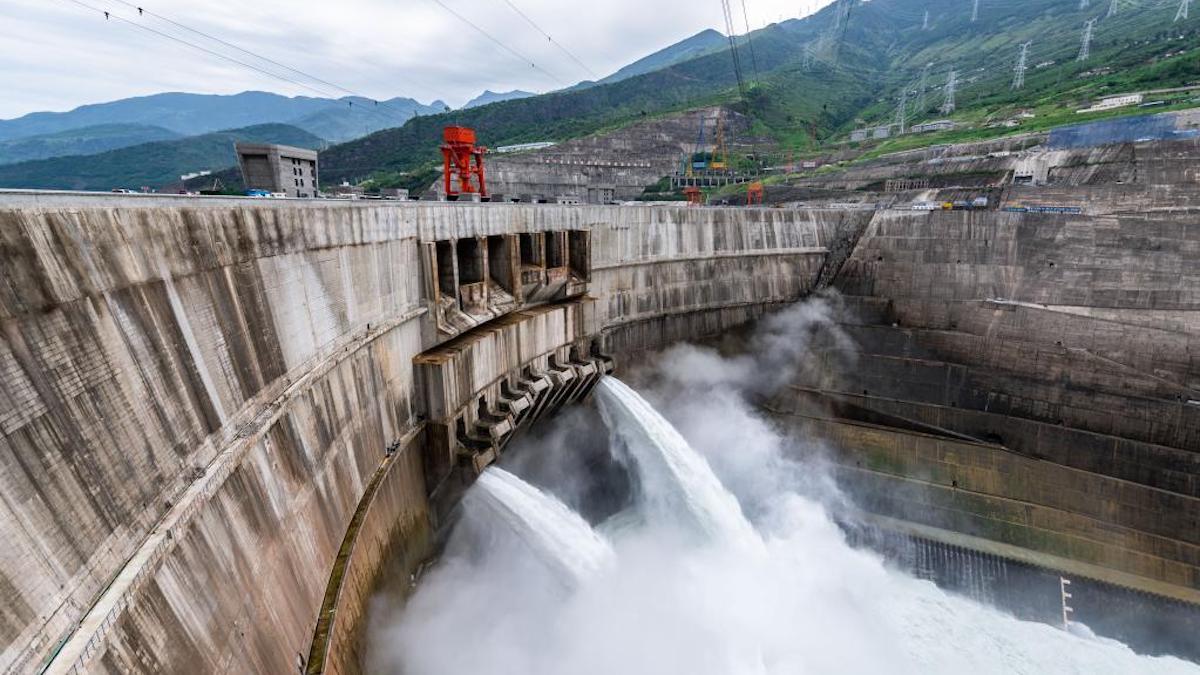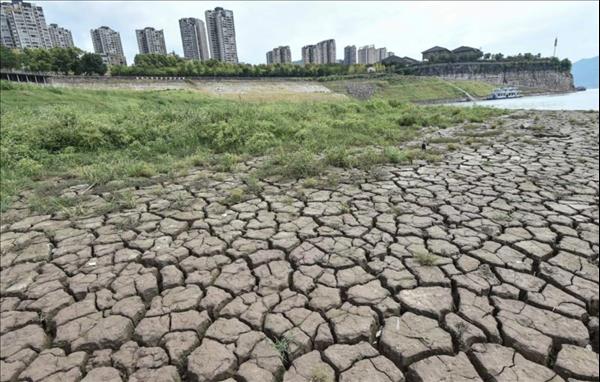
Drought Roiling China's Already Evaporating Economy
China's southwestern Sichuan province has extended its factory shutdowns to Thursday due to a one-month-long heatwave and drought, marking the latest big global supply chain disruption to emanate from the crisis-hit country.
Foreign manufacturers including Apple and Toyota as well as Chinese solar power product cell makers had originally planned to resume production on Sunday after their six-day shutdowns ended on Saturday. However, the provincial government on Sunday released a Level 1 emergency response due to the extreme weather and ordered factories to stop work.
About 16,500 companies in Sichuan have reportedly been affected by the power shortage after reservoirs' water levels dropped and halved the province's hydropower output.
Some Chinese media said the problem could lead to more factory shutdowns in eastern coastal cities with massive industrial capacity, though academics believed that last September's nationwide power crunch would not repeat this year.
Over the past two decades, China has been building hydropower, wind and solar power plants in its western region and transmitting cheap electricity to industrial cities in the eastern region.
As Sichuan is located on the upstream of the Yangtze River and has about 1,400 streams, it built a large number of hydropower plants to supply 80% of its power consumption while selling the excess electricity output to neighboring provinces.
While many parts of the world were suffering from heatwaves and dry weather in July, Sichuan saw the water levels of its reservoirs drop by 40% in July and 50% in August from a year ago. The State Grid Sichuan Electric Power Company said its power output had recently been halved due to the hot weather and drought.
The National Meteorological Center of the China Meteorological Administration (CMA) said last week it had issued high-temperature red warning signals, which refers to a situation where at least four provinces recorded over 40°C in the past 48 hours, for 28 consecutive days between July 20 and August 17.
It said the number of days with high temperature amounted to 12 days on average across different places in the country between June 1 and August, the highest since such records were kept beginning in 1961. Normally, the figure should be about seven days, the CMA said.

Foxconn employees operate on an assembly line in China. The Apple supplier's factories are shut in Sichuan. Image: AFP
On August 14, the Sichuan government ordered the shutdown of all factories and stopped air-conditioning in shopping malls and public facilities between August 15 and 20 to give local residents a higher priority in receiving electricity. On Sunday, it extended the shutdown period to August 25.
Last week, affected factories included Taiwanese manufacturing giant Foxconn, a maker of the iPad and Apple Watch, and BOE Technology Group Co Ltd, a supplier of LCD and OLED flat panels for Apple, media reports said. Japanese automaker Toyota said if it could not resume its production that its sales in mainland China would be crippled.
The shutdown of solar power product makers in Sichuan including Tongwei, Contemporary Amperex Technology, JinkoSolar and GCL New Holding might disrupt the global supply chain, Yuan Silai, an IT columnist, wrote in an article last Saturday. It was difficult for Sichuan to diversify to solar and wind power or rely on coal power generation in the short run, Yuan noted.
Li Junfeng, an executive member of the council of China Energy Research Society, told Yicai.com that it was abnormal that the water levels of the Yangtze River dropped significantly in late July and early August as the dry season should be between November and April. Li said it had been the earliest dry season since records were kept beginning in 1951.
Li said as the power grid was designed and built to transfer Sichuan's excess power to other provinces, it was difficult for other regions to transmit electricity back to Sichuan.
He said when a place relied heavily on wind, solar and hydroelectric energy, its power output would easily be affected by the weather. He said it was necessary for Sichuan to build more power storage facilities to stabilize its energy supply.
The weather situation was at another extreme when Sichuan province and the nearby Chongqing municipal city were hit by huge flooding of the Yangtze River in the summer of 2020. The disaster damaged many residential and agricultural areas downstream and caused the 2.4-kilometer Three Gorges Dam spanning the Yangtze River in Hubei province to become slightly deformed.
Li Guoying, Minister of Water Resources, said last Saturday that drought in the southwest region and nationwide hot weather would continue in the following week. Li said the government had set up an anti-drought task force to ensure water supply in cities along the Yangtze River.

Water levels are low at the Baihetan Dam at the upper stretch of the Yangtze River in Sichuan. Photo: Xinhua
He said at the same time the northwest region, or the upstream of the Yellow River, would see flooding due to some unusual heavy rainfalls.
Media reports said some districts in Shanghai, Zhejiang and Jiangsu provinces had ordered their factories to partially suspend productions to save energy during the past week. It was unclear if the order would be extended.
Jin Xiandong, a spokesperson of National Development and Reform Commission, said on August 16 that the decline in hydropower output would create extra demand on coal-fired power generation.
Currently, China produces 60% of its electricity by burning coal. In July, the country's total electricity output rose 4.5% from a year ago while coal-fired electricity output increased 5.3%.
Last September, China suffered from a nationwide power crunch as power plants lost the market incentive to maintain output amid a drastic increase in coal prices and the nation's electricity price cap. The central government spent several months stabilizing the situation by boosting coal supplies in Shanxi and Inner Mongolia and raising price caps.
Wu Jiang, an assistant professor at Renmin University and a former member of the State Electricity Regulatory Commission, said the government should closely monitor the power shortage problem in Sichuan and prevent coal suppliers from raising prices irregularly.
Wu said hopefully last September's power crunch would not repeat this year.
Read: China plunges into self-inflicted darkness
Read: Tariff cuts won't solve China's coal dilemma
Follow Jeff Pao on Twitter at @jeffpao3

Legal Disclaimer:
MENAFN provides the
information “as is” without warranty of any kind. We do not accept
any responsibility or liability for the accuracy, content, images,
videos, licenses, completeness, legality, or reliability of the information
contained in this article. If you have any complaints or copyright
issues related to this article, kindly contact the provider above.


















Comments
No comment